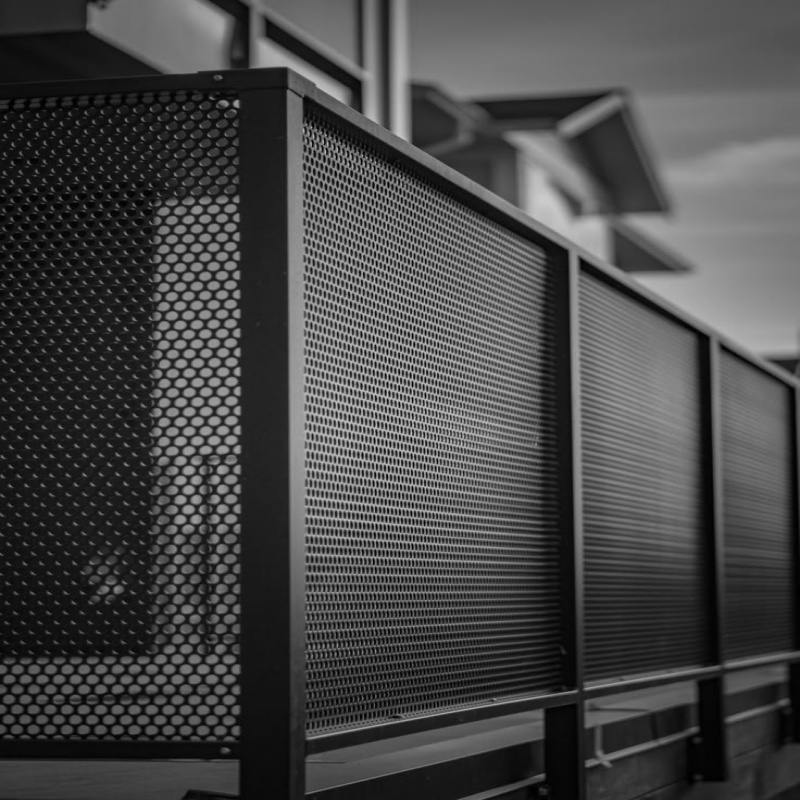Edited by: View Mate All Glass Railing
- Cable Railings (Stainless Steel Cables)
Use tensioned steel cables between posts.
Pros: They offer a very minimalist look, are relatively low in cost, durable, require low maintenance, and are good for preserving views.
Cons: They do not provide as solid a barrier as glass; cables may sag over time and need re-tensioning.
Best for: Modern, industrial, or open-view settings where full wind protection isn’t essential.
- Metal Mesh or Perforated Panel Railings
Panels made of woven or perforated metal (e.g., steel mesh) can be used as infill.
Pros: They are very strong, can be powder-coated in various colors, and are good for both safety and design.
Cons: They offer less transparency than glass or cables; they might feel more “solid” and less open.
- Wood Railings
Traditional choice — wood balusters and handrails.
Pros: They have a warm, natural aesthetic; can fit many architectural styles; and are relatively easy to work with.
Cons: They require maintenance (sealing, painting), and can warp or rot if not properly cared for.
- Aluminum Railings
Powder-coated aluminum railings (pickets or rails).
Pros: They are lightweight, rust-resistant, and require lower maintenance than wood.
Cons: They are less “see-through” than glass; the design may feel less premium.
- Hybrid Designs
Combining materials: for example, use glass where you want the most visibility, but cable or mesh elsewhere to save cost.
Pros: They are flexible, cost-effective, and customizable.
Cons: They require careful design to make transitions seamless.
Post time: Nov-25-2025









